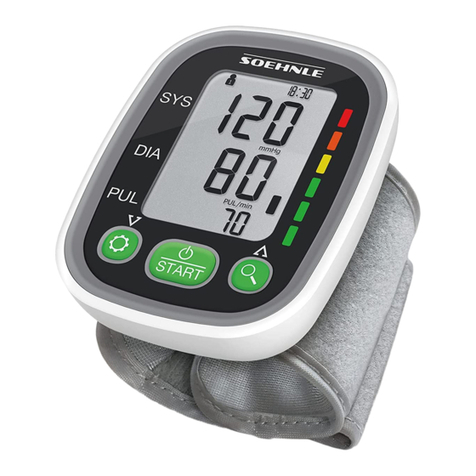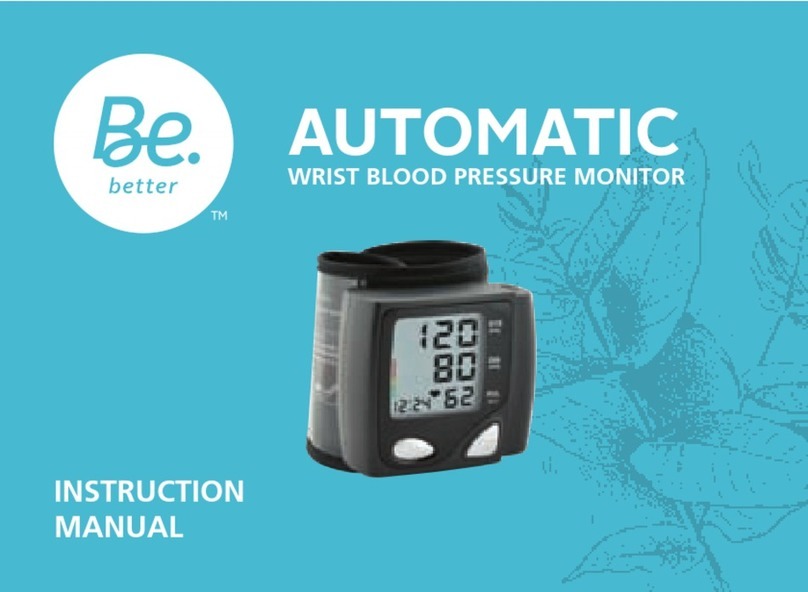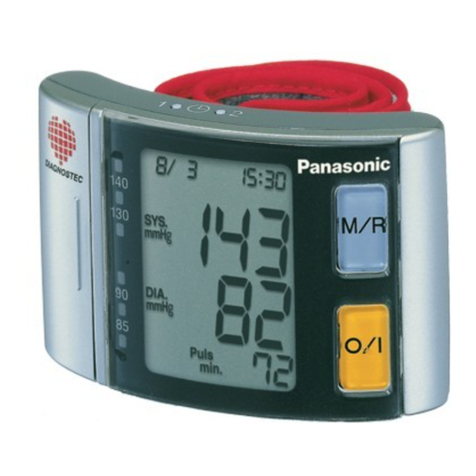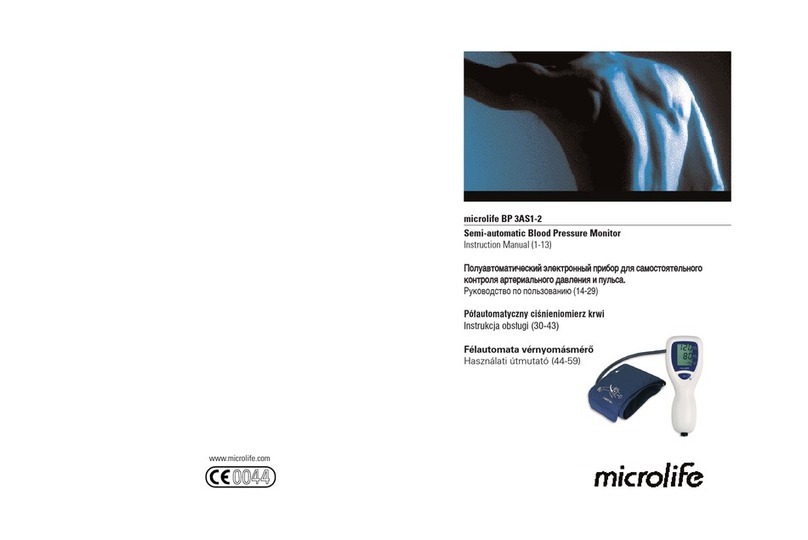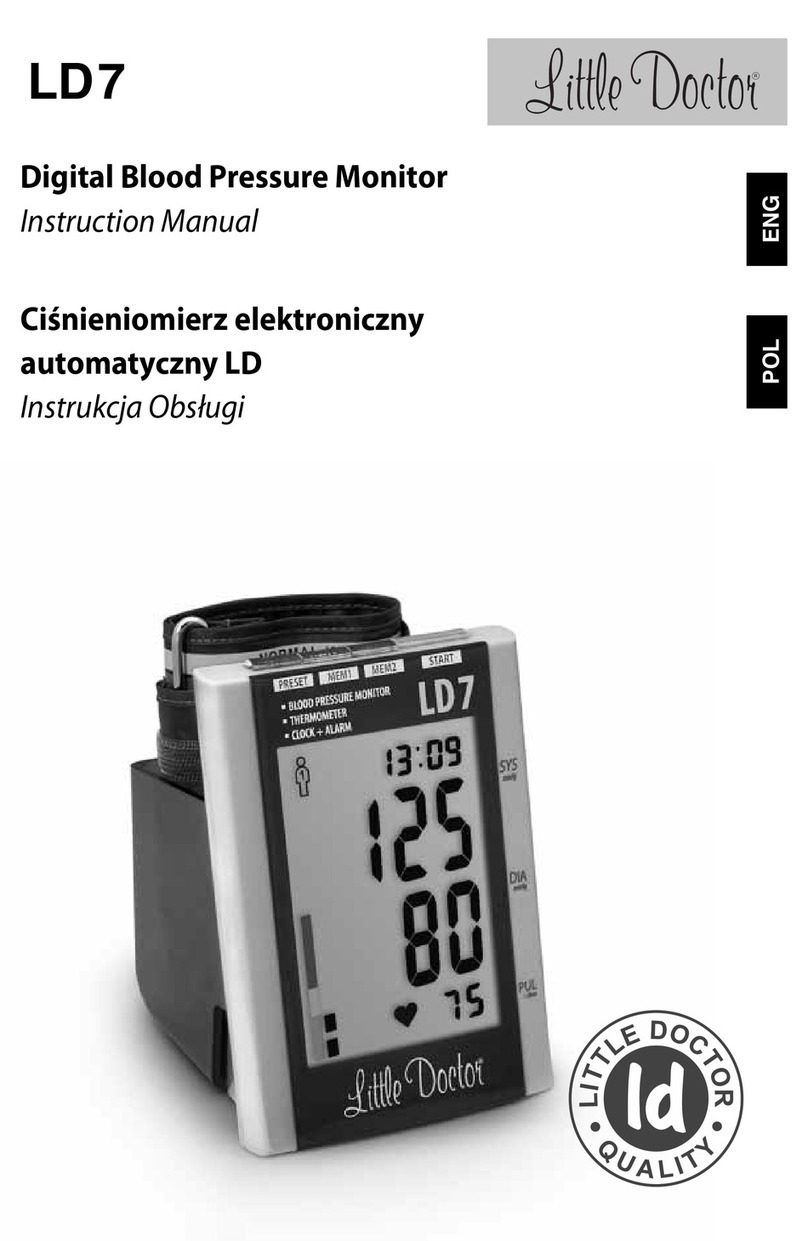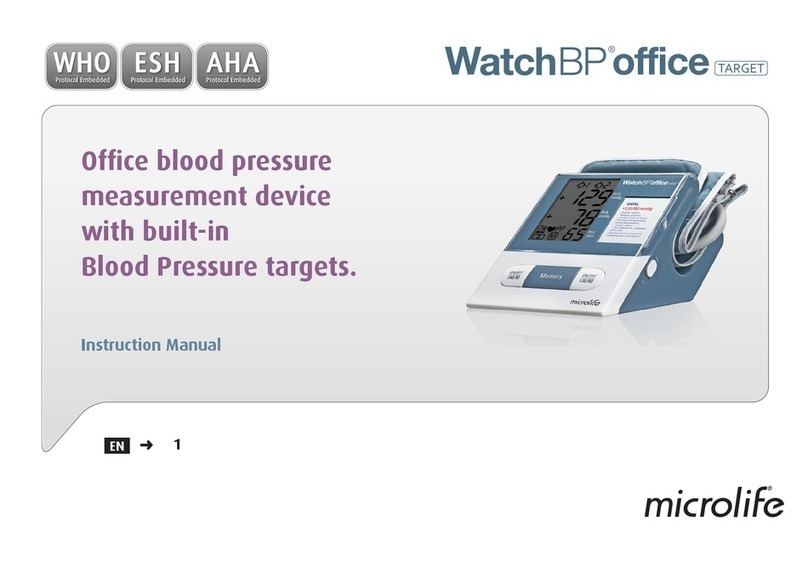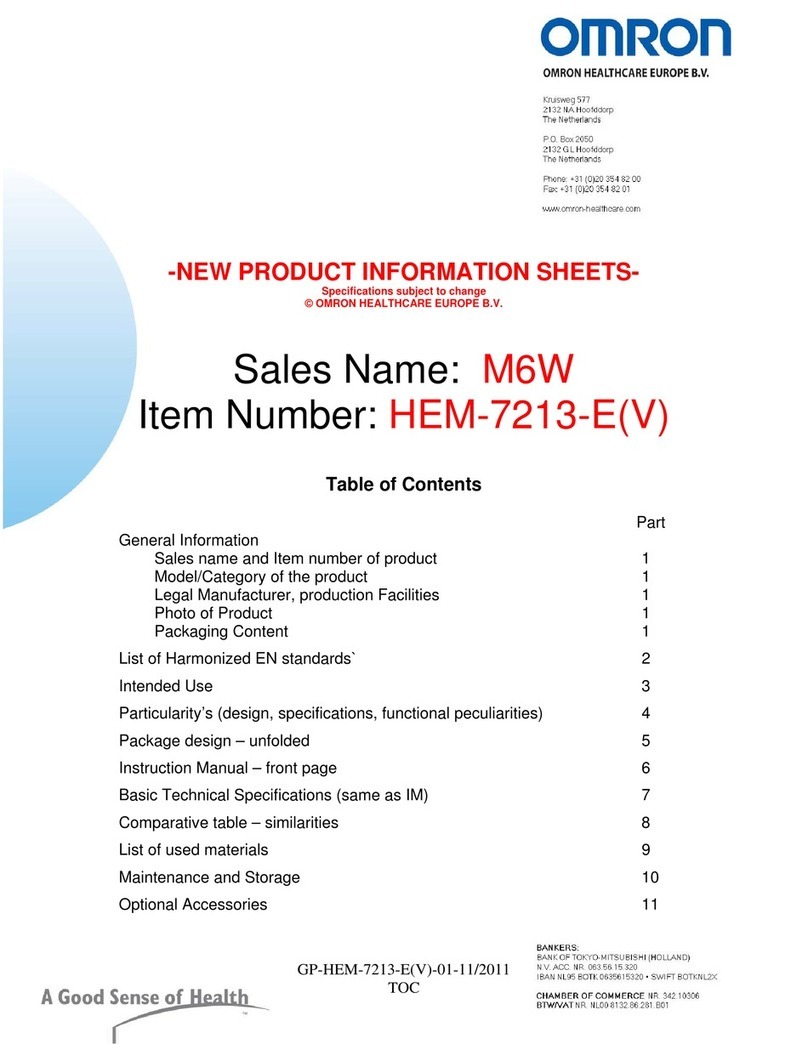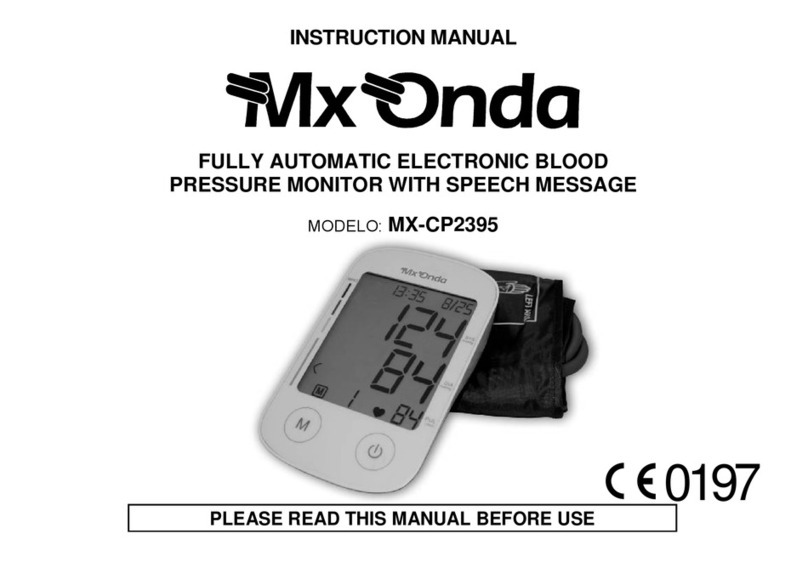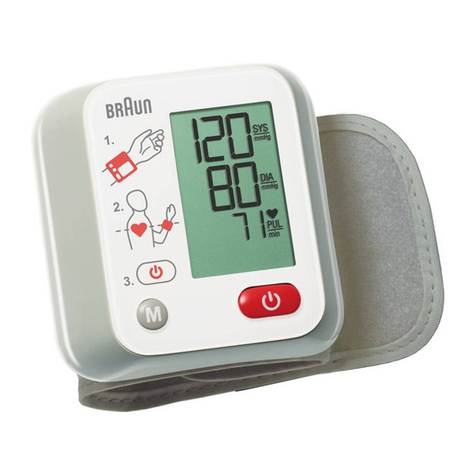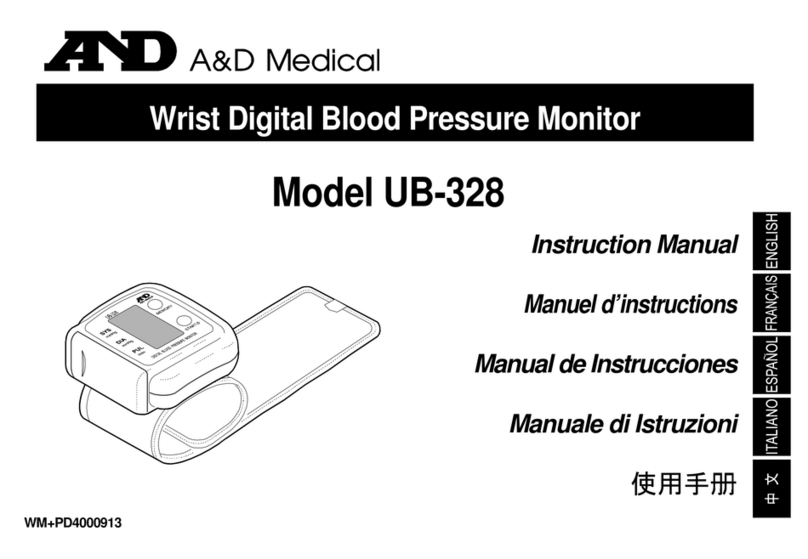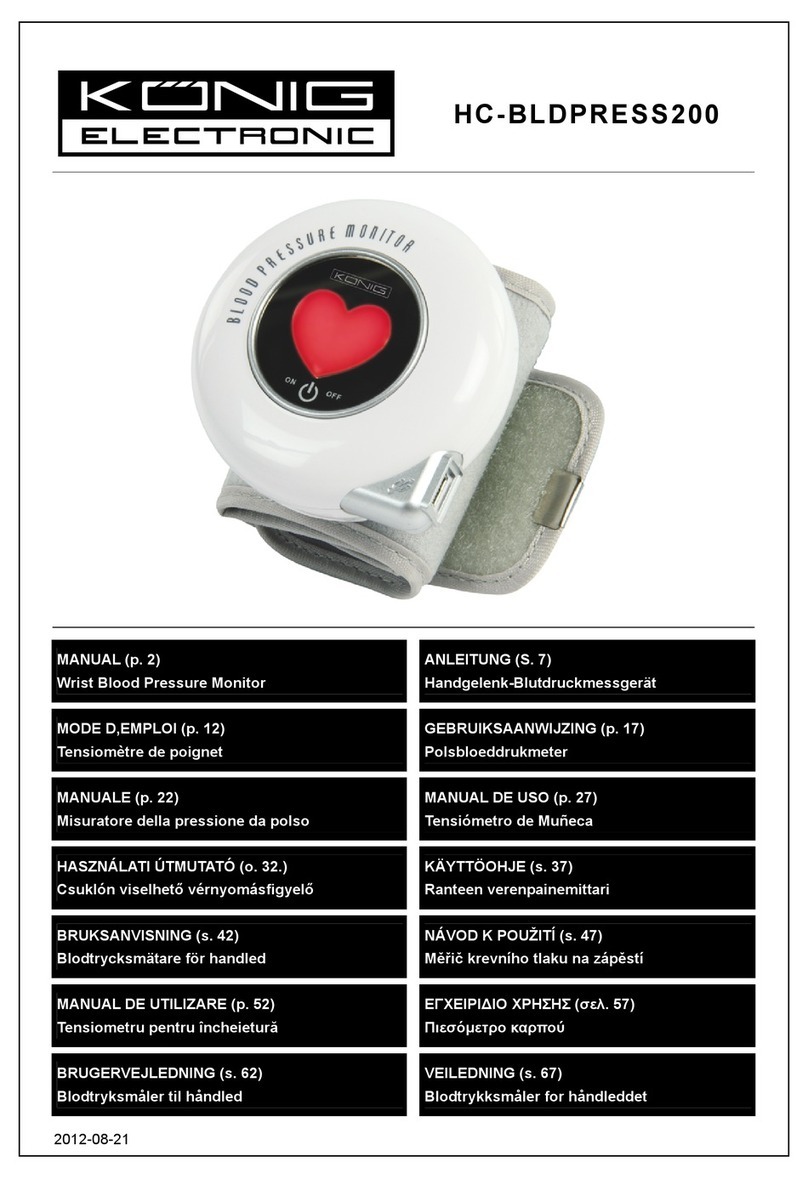
Your blood pressure is lowest when the heart rests (in-between beats). This is
called your diastolic blood pressure.
It is critical to maintain blood pressure values within a “normal” range in
order to prevent cardiovascular diseases. Increased blood pressure values
(various forms of hypertension) have associated long and medium term health
risks. These risks concern the arterial blood vessels of your body, which
are endangered due to constriction caused by deposits in the vessel walls
(arteriosclerosis). An insufficient supply of blood to important organs (heart,
brain, muscles) can be the result. Furthermore, with long-term increased blood
pressure values, the heart will become structurally damaged.
There are many different causes of the appearance of high blood pressure.
We differentiate between common primary (essential) hypertension, and
secondary hypertension. The latter group can be ascribed to specific organic
malfunctions. Please consult your doctor for information about the possible
origins of your own increased blood pressure values.
2.2 Normal Blood Pressure Values
Blood pressure is generally considered too high when, at rest, the diastolic
pressure is above 90 mmHg or the systolic blood pressure is over 140 mmHg.
If you obtain readings in this range, consult your doctor immediately. High
blood pressure values over time can damage blood vessels, vital organs such
as the kidney, and your heart.
Should the systolic blood pressure values lie between 140 mmHg and 160
mmHg or the diastolic blood pressure values lie between 90 mmHg and 95
mmHg, consult your doctor. Regular self-checks will be necessary.
With blood pressure values that are too low (i.e., systolic values under 105
mmHg or diastolic values under 60 mmHg), consult with your doctor.
Even with normal blood pressure values, a regular self-check with your blood
pressure monitor is recommended. In this way you can detect possible changes
in your values early and react appropriately.


